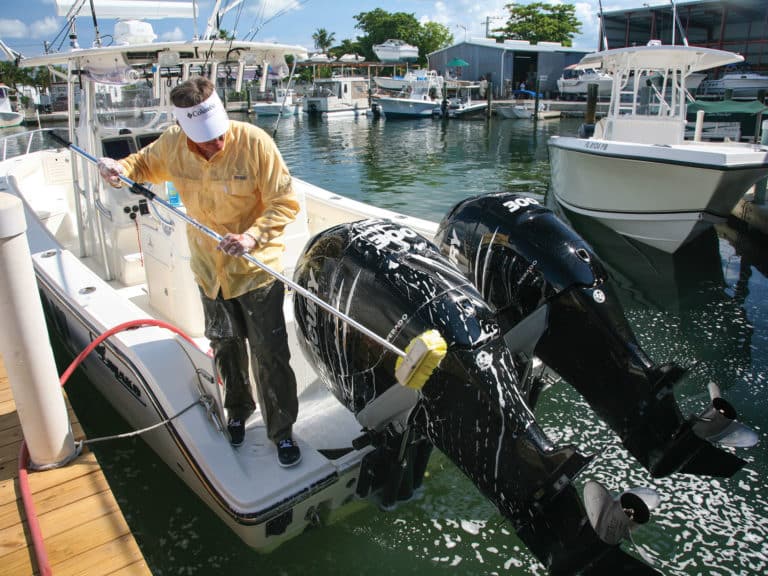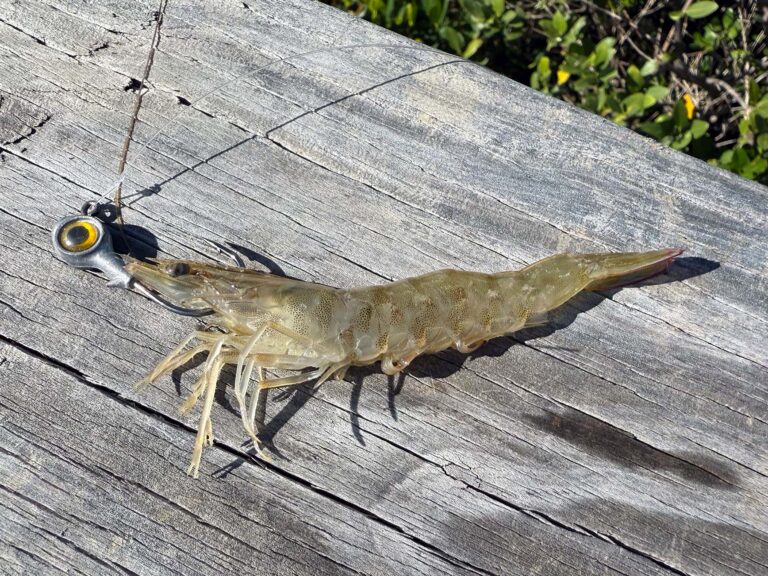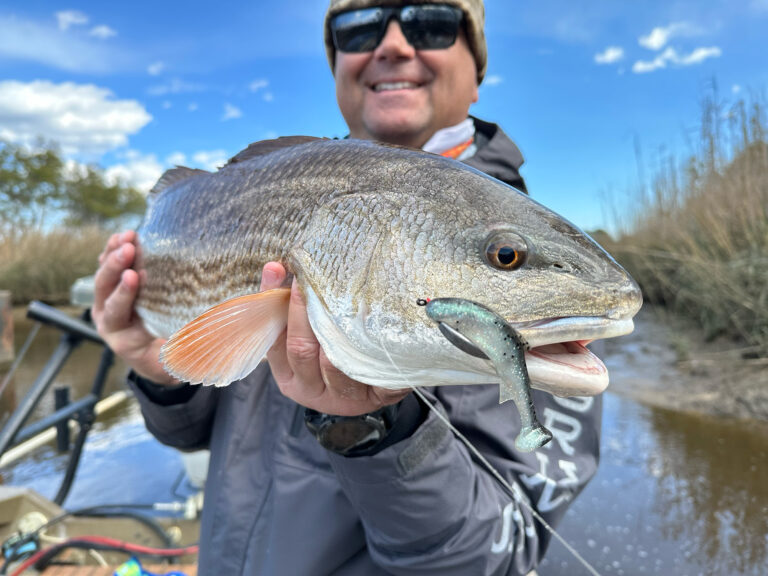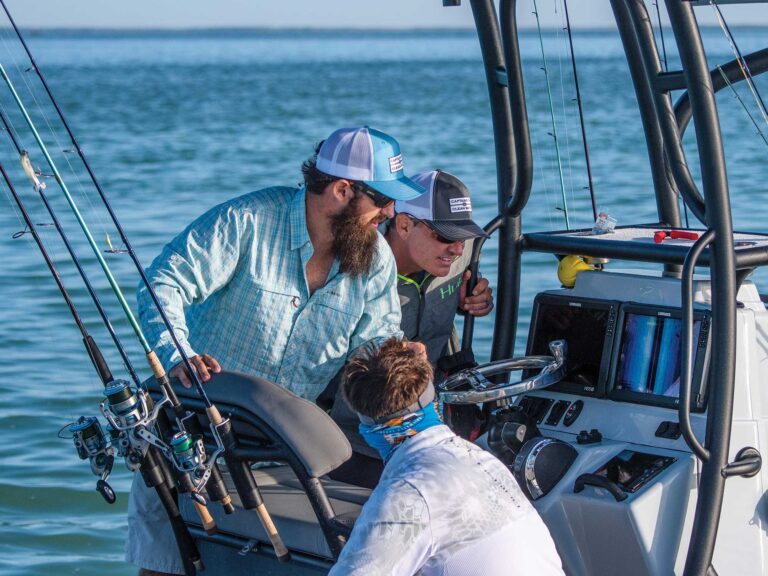The Florida Keys are home to some of the best fishing guides in the world. From the earliest days of light-tackle fishing, the reef line from Key Largo to the Dry Tortugas off Key West has been the front line for developing and perfecting new techniques and equipment for a variety of species.
In the ’60s names like Reagan, Albright, Keith and Drake left their marks. In the ’70s, ’80s and ’90s captains like Adler, Trosset, Nielsen, and Delph contributed their innovationsto angling.
Today, the next generation of captains is leading the way. They fish harder and smarter than most, going the extra mile to make sure their clients see the very best in what the Florida Keys have to offer.
SWS had the chance to talk with three of these “young guns” about their favorite types of fishing and what you can do to catch more fish.
Get Aggressive
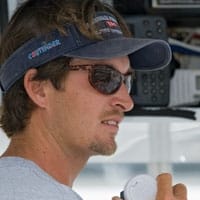
Each winter, when the ballyhoo flood out of Florida Bay seeking the warmer water along the reef edge, sailfish show up to take advantage of the movable feast. That’s when George McElveen is ready to pounce.
At 28 years old, McElveen is one of the youngest yet most experienced skippers in the Keys; he’s already been at it for seven years. McElveen bought his boat, The Reel McCoy, when he was 21, and he’s been terrorizing the winner’s circle at sailfish tournaments throughout the Keys ever since. Using his aggressive fishing style and penchant for meticulous detail, he logs numerous double-digit days every year while chasing sails showering ballyhoo.
“It’s just something I’m really good at, and I love it,” says McElveen. “Several years ago, I repowered specifically to do that. I can go from standing still to 30 knots right now. Lots of times you have to get to the fish before they eat the bait that they’re showering. It’s a very aggressive style of fishing.”
One of McElveen’s keys to success is bait collection and care. Primarily he fishes ballyhoo, but in tournaments he’ll come armed with a selection of ballyhoo, herring, pilchards and goggle-eyes.
“The best baits are the ones you catch hair-hooking or on sabikis,” says McElveen. “Hoop nets work well when the baits are thick, but in general you want to avoid netting your bait. Never handle them too much, and use dehookers when putting them in the livewell. If you are moving them, do it one at a time, and don’t overload your wells.”
McElveen also separates his bait by species in four wells (one 50- , one 100- and two 70-gallon wells) aboard his boat. If he does catch some using the hoop net or cast net, he’ll separate those from his hook-caught baits, too.
Once he’s made bait, McElveen and his crew head to the reef, where they look for sails showering the large schools of ballyhoo and needlefish. One of the most important things, he says, is being able to read the showers.
“You’ll get a lot of different types of fish running the ballyhoo on the reef,” says McElveen. “When the sails are pushing them, they’re very synchronized. Cudas or bar jacks cause them to jump more erratically.”
Once McElveen confirms the fish is a sail, he’ll get his boat in front of the bait and position it so his mates or anglers can make a cast. He prefers 40- or 50-pound fluorocarbon leaders with VMC 7385 BN circle hooks. To prevent the ballyhoo from coming off the hook, he’ll take a piece of copper wire, attach it to the hook eye, run it up through the ballyhoo’s lower jaw and wrap it along the beak and hook shank.
“I like the cast to be underhanded, leading the fish by about 10 feet or so,” says McElveen. “Then I like the angler to wind the ballyhoo into its path. Generally with that hook, when they eat, you close the bail manually, wind down and they’re on.”
McElveen also has some specific thoughts on handling sails near the boat. “We don’t bring any fish in for pictures – ever.” he says. “We try to cut the leader as close to the hook as possible, making sure not to pull on the leader to avoid injuring the fish. The hooks rust out, and it leaves the fish in better shape. And that’s important for us, as a lot of times we’ll catch the same fish day after day after day.”
Go Fly a Kite
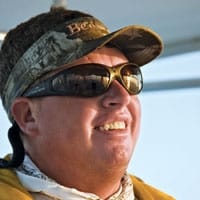
South Florida native Martin “Beaver” Formento cut his teeth fishing off Ft. Lauderdale and Miami, home waters for some of the best kite fishermen in the world. He’s been running his own charter business in the Upper Keys for the past nine years, and over the last three years he’s made kite fishing a regular part of his daily charter routine, consistently placing in or near the winner’s circle in a number of Keys tournaments.
“Most of the boats down here bump-troll live ballyhoo all day long,” says Formento. “That’s a great way to catch sailfish, but it kind of limits you with other species. And for me, it’s kind of boring.”
Formento prefers kite fishing because it involves the customers and gives them wider opportunities at not only sailfish but king mackerel, dolphin, amberjack, tuna and others.
“I have my share of hard-core clients who really like to put up numbers and compete in tournaments,” says Formento. “But to me, there’s nothing better than taking a first-timer from the Midwest or a little kid out and helping them catch their first fish. Kites are key in that. And it’s so visual … you get to see or feel the bait get nervous and watch the fish eat. Then all you have to do is push up the drag and wind. It’s a done deal most of the time. The angler is very involved in the type of kite fishing we do.”
But flying a kite can be a little intimidating, right?
“Folks shouldn’t really be scared to try it,” says the 39-year-old captain. “They just have to get out and do it.”
Formento’s basic kite-fishing rig consists of a kite rod rigged with a 4/0 Penn Senator attached to an Electramate and spooled with 80-pound PowerPro braided line. For light to medium wind, he prefers kites made by SFE. In heavier winds, he’ll opt for the Kite Hunter, made by Jimmy Lewis. When rigging the kite outfit, Formento recommends positioning the first release clip at least 75 feet from the kite and putting 100 feet between additional clips. To get more spread and more baits in the water, he runs the kites off his outriggers and crimps three 14-ounce split shots on the bottom outside corner of the kite, canting the kites out from the outriggers even more. The resulting spread lets him fish three baits on each kite and a flat line down the middle. Formento uses the engines to just keep the bow of his boat into the wind – keeping the baits straight up and down and avoiding any unnatural drag.
Preferring 20-pound conventional outfits armed with either Avet or Shimano TLD lever drag reels, Formento begins with a Bimini Twist and then attaches 10 feet of 50-pound monofilament via back-to-back uni-knots. He’ll attach a wind-on swivel to that and finish things off with 5 feet of 40-pound fluorocarbon leader. If he suspects mackerel or wahoo are around, he’ll attach 18 inches of light wire to the terminal end. In either case, Formento finishes the rig off with a VMC non-offset circle hook.
“I know some guys are using trebles, but I wouldn’t use anything but circle hooks,” says Formento. “I’ve been using them exclusively for three years now. When a fish bites, all the angler has to do is lock up and wind down. It’s automatic. “
Be Prepared

That’s the motto for Rob Nevius, who runs the Jerkwater out of Hurricane Hole Marina in Key West. That’s not surprising, considering the former Eagle Scout originally moved to the Florida Keys to work at the Scouts’ High Adventure Sea Base Camp. His 29-foot SeaVee is essentially a floating tackle box. On any given day, he might have two dozen outfits ranging from 8-pound spinning rods and 30-pound conventionals to fly rods.
“Our fishing in Key West is unique,” says Nevius, who has been fishing there for 12 years. “You never know what might swim up to the boat on a daily basis here. You could be fishing the color change for sailfish and a 60-pound cobia might come swimming down the break. But chances are, whatever it might be, we’ll be ready.”
One of his favorite types of fishing, though, is live baiting for king mackerel, either in the Gulf of Mexico or off the Atlantic reef edge. “We get some fantastic fishing in the spring for school-sized fish to 30 pounds. It’s great fun on light tackle.”
Nevius prefers 12-pound spinning outfits for the kings, which he generally chums with live pilchards. But if he suspects a larger fish is around, he’ll change things up.
“While I have my anglers pitching baits for kings, I’ll also put a couple of rods on the bottom, hoping to develop some more action and maybe catch some small mutton, yellowtail or lane snapper. The extra activity often draws more kings into the area.”
After catching several legal-size snapper, he’ll take one and put it out on the edge of the chum slick, rigged on a wire kingfish rig consisting of a single J-hook with a treble stinger. The baits are hooked just behind the head, between the gills and the dorsal fin.
“If there’s a big fish, they’ll find it,” says Nevius. “And even if you don’t have a legal snapper to sacrifice, a large blue runner or speedo (red-tailed scad) will draw the same results.”
The proof is in the results; Nevius’ best king to date using this method is 57 pounds.
The Florida Keys has always been home to some of the world’s best fishing guides. Based on these three up-and-comers, the future’s looking pretty good. But don’t take our word for it. Give them a call and experience it first hand.





